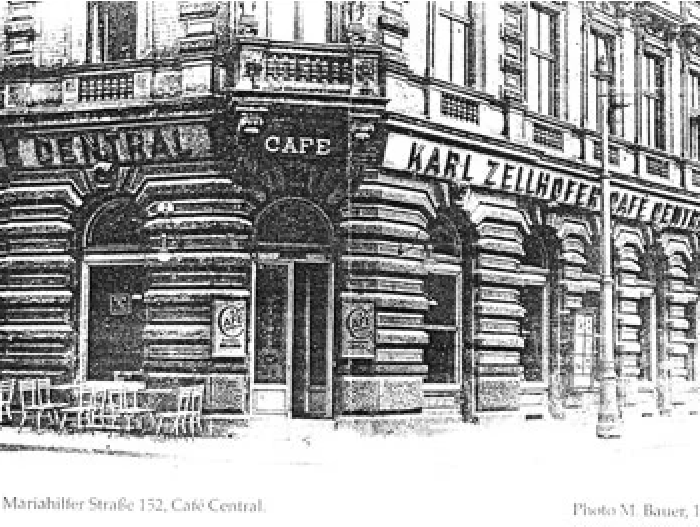Local History
THE MARIAHILFERBRÄU AND VIENNA'S TRADITIONAL PUB CULTURE

The Mariahilferbräu belongs to the category of corner pubs, widespread in Vienna, located at the junction of two streets. Construction plans for the building at Mariahilferstrasse 152 already exist since the year 1870. Shortly thereafter, Karl Zellhofer was the first restaurateur to open Café Central, which was notorious for bumper games in the early 1950s.
After that, for about 20 years the dance hall “Tiroler Alm” was housed in the premises, until in 1980 the Pizzaria Romigo opened. The Mariahilferbräu as we know it today was founded in the Year 2001 opened. The rustic beer pub celebrates the tasty traditions of Viennese cuisine, offers reasonably priced menus at lunchtime and focuses on seasonal specialties. It is not only a meeting place for all generations, but also equally popular with Viennese and international guests.
The pub garden
When tables and chairs are placed in front of the pub on a wider sidewalk or on the street in a pedestrian zone on nice days, this is called a Schanigarten in Austria. Where the Schanigarten got its name is not completely clear. However, there are some speculations: According to one, it comes from “Gianni’s garden”, since Gianni Tarroni got the first permit for a Schanigarten on the Graben around 1750. Another one says that the Schani, as an assistant servant of the waiter and the waiter, got the order: “Schani, carry the garden outside”. This brought out chairs, tables and flower boxes. Finished was the Schanigarten. Also, the term is said to come from the French name “Jean”, as this was often the name given to the waiter in 19th century Vienna.
As soon as the first warm rays of sunshine awaken the longing for fresh air and a cozy garden spot, the lovingly arranged Schanigärten provide color and life to Vienna’s cityscape. There are guest gardens and restaurant terraces all over the world, but the charm of the Viennese Schanigarten remains unmatched.
The tip
Since the Middle Ages, when people started to slip a few pennies to the coachman and the servant that they could grant themselves a liquor in the surrounding inns, the habit of tipping developed into a custom. Thus, in the 19th century, the masters referred servants to the tip already when assessing the wage, some received no wage at all apart from the tip. Today, of course, there are legally regulated wage ordinances, but tips still represent an important source of income for service personnel. In a restaurant or café, it has become customary to give an amount equal to about ten percent of the bill. The idea of tipping today is to give a bonus to those who have an important influence on the quality of the service by making a special effort for the guests’ well-being. True gratitude, as the saying goes, cannot be expressed in words. But it can be expressed in money if you tip a little: Good service is always worth a little extra as recognition for the server.
